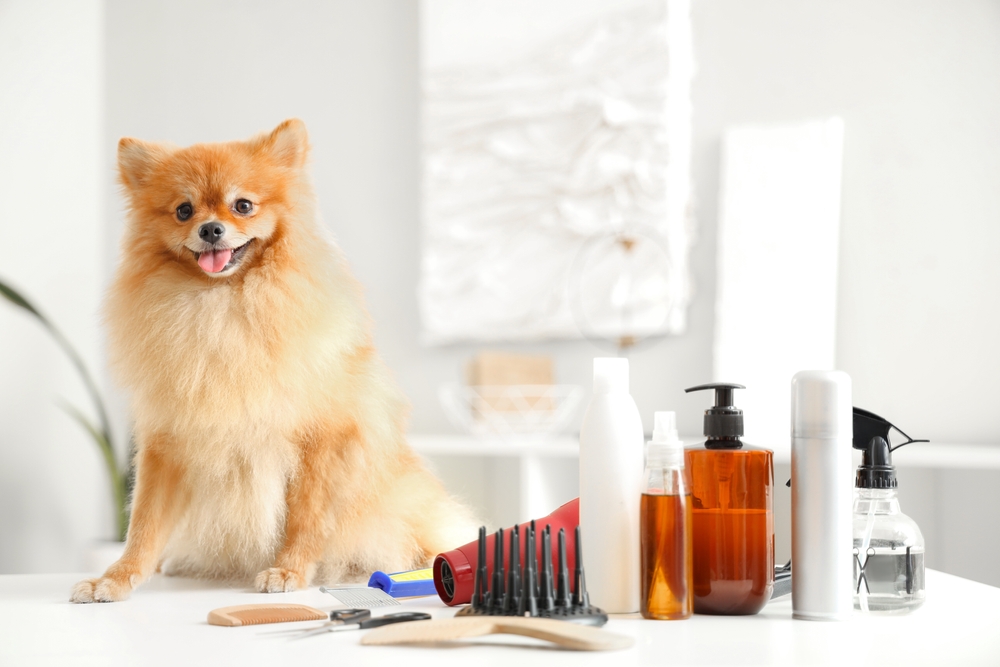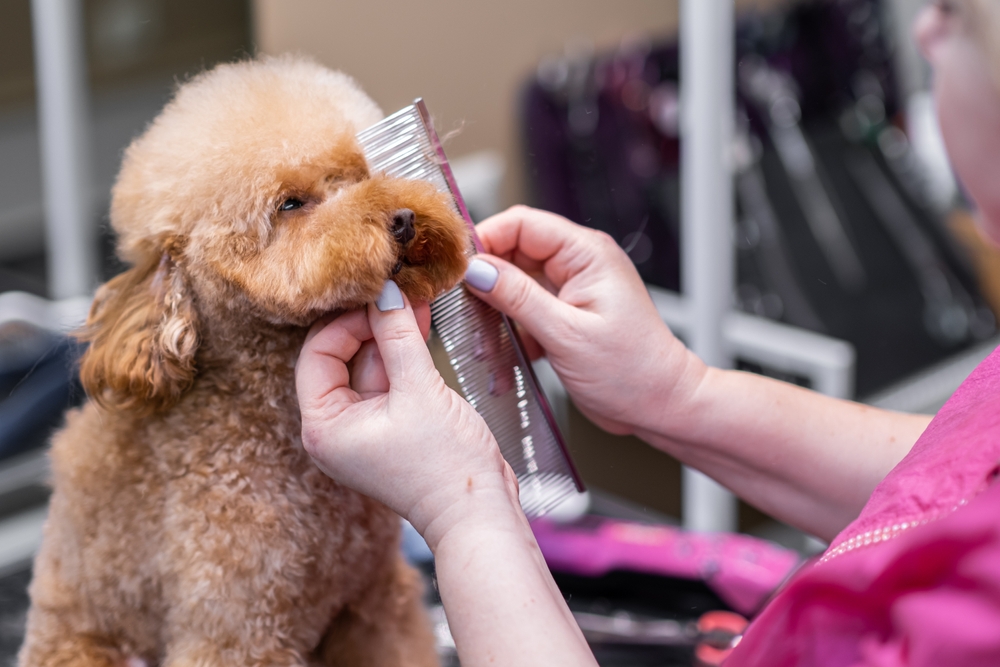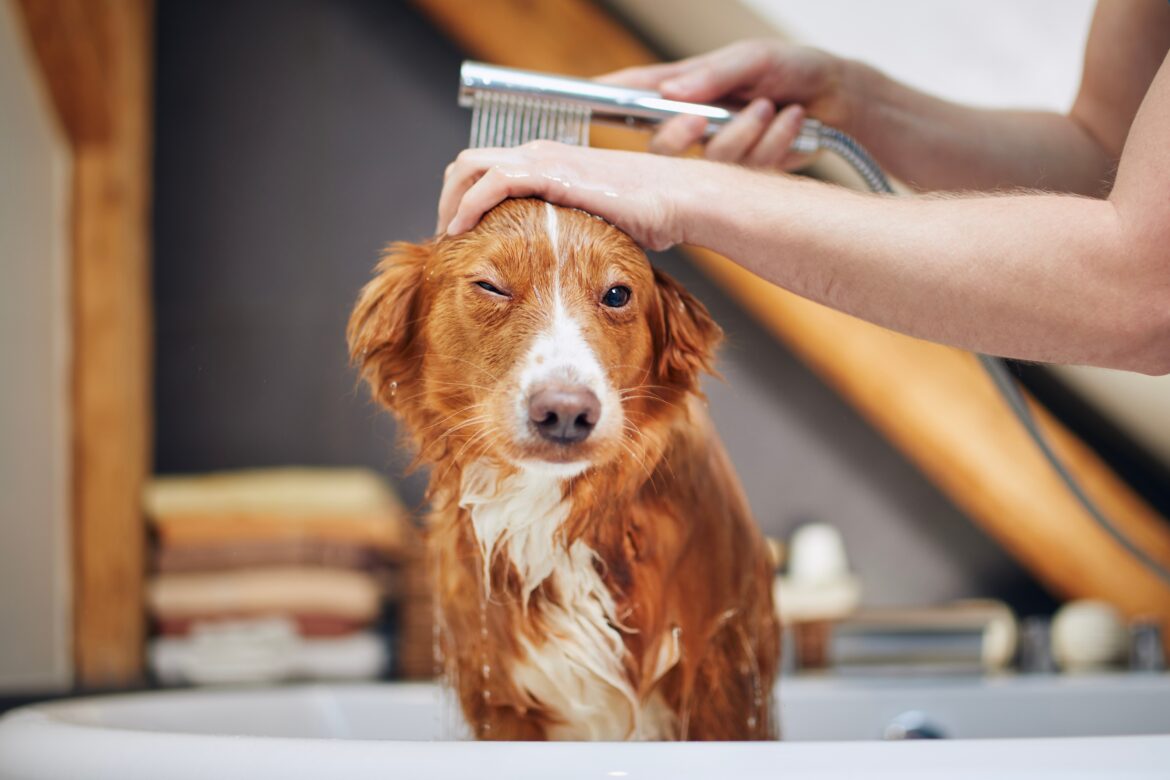Grooming your dog isn’t only about keeping them looking tidy—it’s crucial for their overall health as well. Whether you have a fluffy Golden Retriever or a short-haired Beagle, knowing how often to groom your dog is key to keeping them happy and healthy. This guide will help you figure out the best grooming routine for your dog, no matter the breed.
Why Is Grooming So Important?
Routine grooming goes beyond just improving your dog’s appearance:
– Keeps Their Skin and Coat Healthy: Brushing removes dirt, loose hair, and prevents tangles.
– Reduces Shedding: Regular grooming can help manage shedding and keep your house cleaner.
– Prevents Infections: Cleaning your dog’s ears, eyes, and teeth can help stop infections before they start.
– Strengthens Your Bond: Grooming is a great way to spend quality time with your dog, helping them feel loved.

How Often Should You Groom Your Dog?
How often you groom your dog depends on their coat type, breed, and lifestyle. Here’s a breakdown by coat type:
1. Short-Haired Dogs
– Examples: Beagle, Boxer
– How Often: Once a week
– Why: Short-haired dogs have coats that are easy to maintain. A weekly brushing will help remove loose hair and keep their coat shiny.
2. Medium-Haired Dogs
– Examples: Golden Retriever, Cocker Spaniel
– How Often: 2-3 times a week
– Why: Medium-haired dogs are more prone to tangles, especially around their ears and legs. Regular brushing will prevent mats and keep their coat smooth.
3. Long-Haired Dogs
– Examples: Shih Tzu, Afghan Hound
– How Often: Every day
– Why: Long-haired dogs need daily brushing to stop their fur from tangling. They can also pick up dirt easily, so regular grooming is a must.
4. Double-Coated Dogs
– Examples: Husky, German Shepherd
– How Often: 2-3 times a week, more during shedding seasons
– Why: Double-coated dogs have a thick undercoat that sheds, especially during spring and fall. Regular brushing during these times will help control shedding and prevent mats.
5. Curly or Wavy-Haired Dogs
– Examples: Poodle, Bichon Frise
– How Often: Every 1-2 days
– Why: Curly-haired dogs’ fur can mat easily if not brushed often. Keeping up with regular brushing will stop tangles and keep them looking good.
Grooming Is More Than Just Brushing
While brushing is important, there are other grooming tasks to keep your dog clean and healthy:
1. Bathing
– How Often: Every 4-6 weeks
– Why: Bathing removes dirt and keeps your dog smelling fresh. But don’t bathe them too often, or you’ll dry out their skin.
2. Nail Trimming
– How Often: Every 3-4 weeks
– Why: Long nails can make it uncomfortable for your dog to walk. Regular nail trims will help them stay comfortable.
3. Ear Cleaning
– How Often: Weekly
– Why: Clean your dog’s ears to prevent infections, especially if they have floppy ears.
4. Teeth Brushing
– How Often: 2-3 times a week
– Why: Brushing your dog’s teeth will help prevent gum disease and bad breath.
5. Eye Care
– How Often: As needed
– Why: Clean around your dog’s eyes if you notice tear stains or dirt buildup.
Breed-Specific Grooming Tips
Each breed has unique grooming needs. Here are some quick tips for a few popular breeds:
1. Golden Retriever
Golden Retrievers have thick coats that shed a lot, especially in spring and fall. Brush them 2-3 times a week to control shedding and keep their fur shiny.
2. Poodle
Poodles’ curly coats don’t shed much but can mat easily. Daily brushing and regular trimming will keep their coat in top shape.

3. Bulldog
Bulldogs have short coats but can have skin issues due to their wrinkles. Make sure to clean their skin folds regularly to prevent infections.
4. Shih Tzu
Shih Tzus have long, silky coats that require daily brushing to keep them from getting tangled. Regular trims also help keep their fur manageable.
5. Husky
Huskies have a dense double coat and experience heavy shedding twice a year. Brush them more often during shedding seasons to remove loose fur.
Final Thoughts
Grooming is a key part of keeping your dog happy, healthy, and looking their best. Knowing your dog’s grooming needs according to their breed will help you create a routine that suits both you and your furry friend.
Grooming your dog regularly goes beyond just keeping them looking good—it’s essential for their overall health. And, it’s also a wonderful way to bond with them. With the right tools and a little patience, you’ll have a clean, comfortable, and happy dog in no time!


